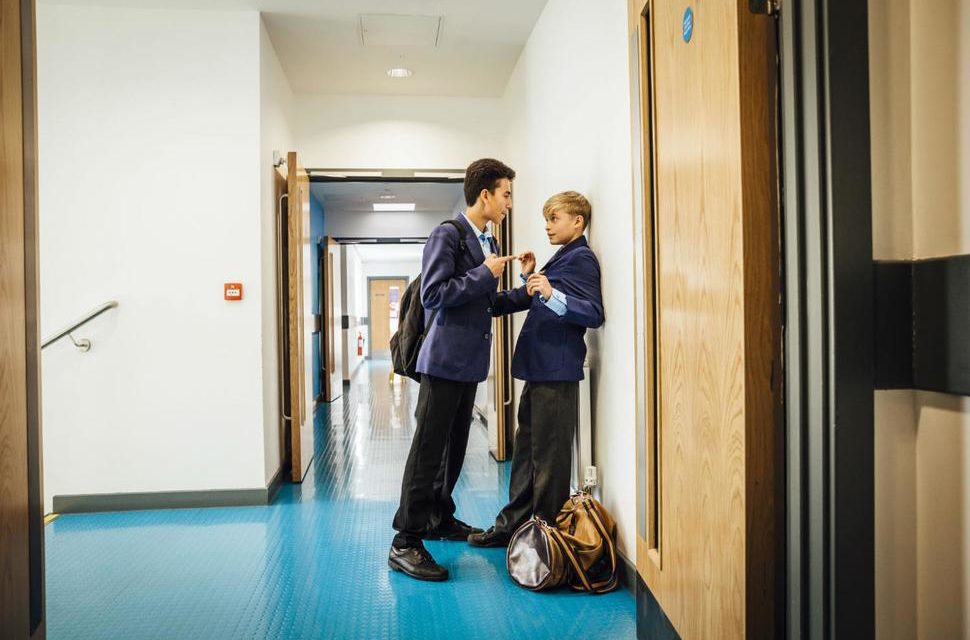New federal data finds fewer students are being bullied, which includes being pushed, shoved and tripped. (GETTY IMAGES)
THE PERCENTAGE OF students reporting that they’ve been bullied has dropped by more than a third since 2007, according to federal data released Thursday.
The new figures say that 20.8 percent of students reported being bullied in 2015, continuing a downward trend that dates back to 2007, when 31.7 percent of students reported being bullied.
A similar – though not as significant – decrease was also seen in students reporting being called a hate-related word, with the 7.2 percent reporting such an experience in 2015 down from some 9.7 percent in 2007.

COURTESY OF U.S. DEPARTMENT OF EDUCATION/NATIONAL CENTER FOR EDUCATION STATISTICS
Moreover, the percentage of bullied students who reported being bullied most frequently – as in almost every day – also decreased, while the percentage reporting that they had told a teacher or other adult about being bullied increased.

COURTESY OF U.S. DEPARTMENT OF EDUCATION/NATIONAL CENTER FOR EDUCATION STATISTICS
The new data comes from the School Crime Supplement to the National Crime Victimization Survey, which is published every other year and looks at changes in reports of bullying and being called hate-related words at school among 12- to 18-year-olds.
The survey covers bullying that takes place in schools, on school property, on a school bus, or going to or from school, and it defines bullying by students who report:
- being made fun of, called names or insulted
- being the subject of rumors
- being threatened with harm
- being pushed, shoved, tripped or spit on
- being pressured into doing things they did not want to do
- being excluded from activities on purpose
- having had property destroyed on purpose
Students are also asked whether they’re bullied based on their race, religion, ethnic background or national origin, disability, gender or sexual orientation, which researchers document as hate-related speech.
The reported drops come as schools have increased their focus on bullying prevention and focused more intentionally on what’s known as social and emotional learning in an effort to improve school climate

